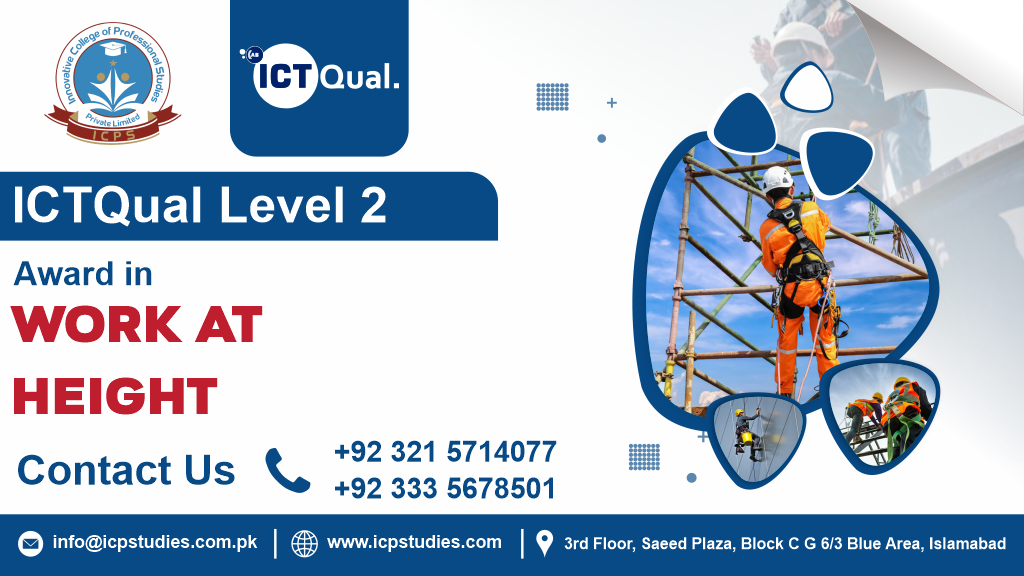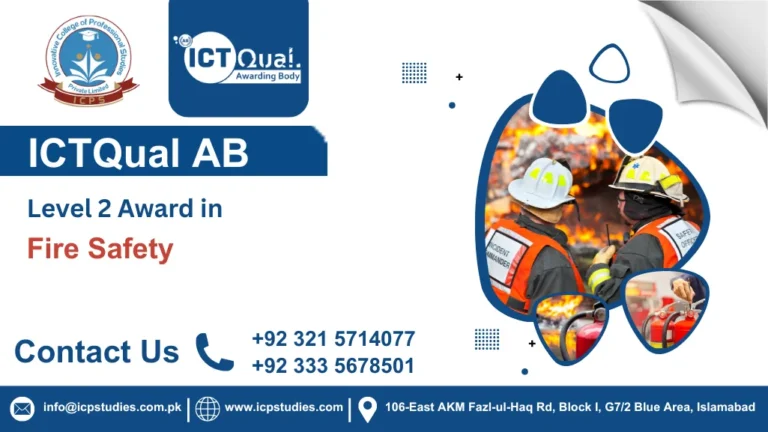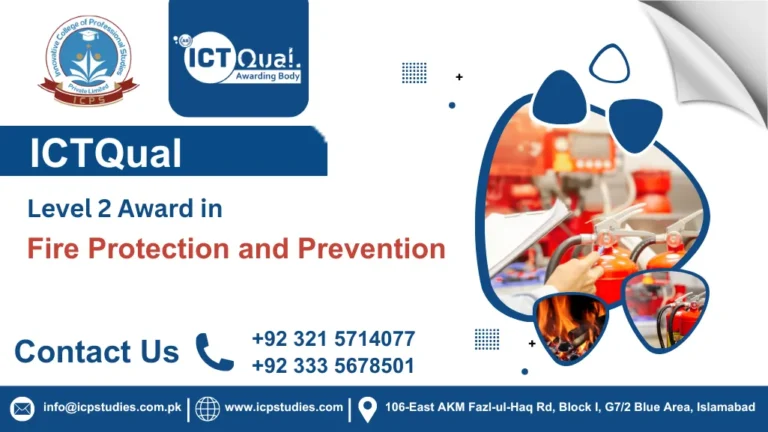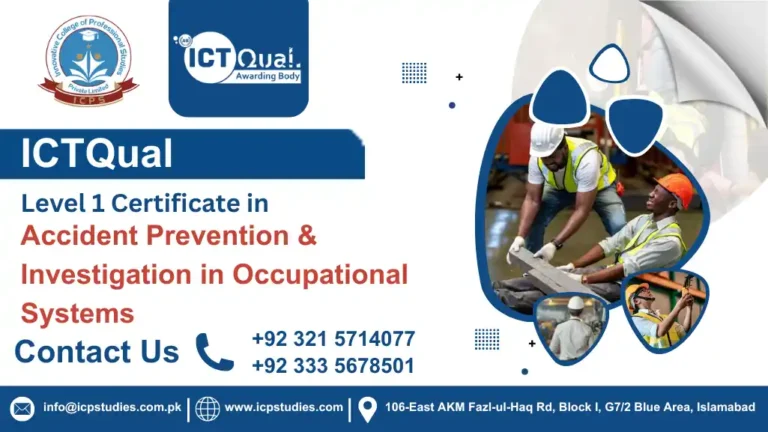In the realm of workplace safety, few areas are as critical and demanding as working at height. Whether it’s construction sites, telecommunications towers, or even simple roof repairs, the risks associated with elevated work environments necessitate specialized knowledge and skills. This is where the Level 2 Award in Work at Height comes into play, offering professionals a comprehensive understanding and proficiency in managing safety in such challenging scenarios.
The Level 2 Award in Work at Height is designed to equip individuals with the necessary competencies to ensure safe practices when working at height. This qualification goes beyond basic awareness and delves into practical applications, regulatory compliance, and risk management strategies. It is particularly valuable for those directly involved in planning, supervising, or conducting work at height activities.
Level 2 Award in Work at Height is not just a certification; it’s a commitment to safety excellence. By equipping professionals with the knowledge and skills to manage work at height safely, this qualification plays a crucial role in safeguarding both individuals and organizations. Whether you’re aiming to enhance your career prospects or ensure your workplace adheres to the highest safety standards, investing in this training is a proactive step toward achieving these goals.
All About ICTQual Level 2 Award in Work at Height
Course Overview
The “Level 2 Award in Work at Height” is a qualification designed to provide individuals with essential knowledge and skills related to working safely at height. This qualification is typically offered by accredited training providers and is aimed at workers who may need to operate at height as part of their job responsibilities.
Level 2 Award in Work at Height, participants typically receive a certificate that validates their competence and understanding of safe working practices at height. This qualification is valuable for individuals working in industries such as construction, maintenance, utilities, and any other sectors where tasks involve working at height.
Study Units
- Introduction to Work at Height
- Legislation and Regulations
- Risk Assessment and Management
- Personal Protective Equipment (PPE)
- Work Equipment and Platforms
- Safe Working Practices.
- Fall Prevention Systems
Admission Criteria
The “Level 2 Award in Work at Height” course is designed for individuals who are required to work at height as part of their job responsibilities. This course is particularly suitable for:
- Workers: Those directly involved in tasks that require working at height, such as construction workers, maintenance technicians, roofers, window cleaners, and scaffold erectors.
- Supervisors and Managers: Individuals responsible for overseeing work at height activities, ensuring compliance with health and safety regulations, and implementing safe systems of work.
- Health and Safety Professionals: Those involved in advising on, planning, or managing work at height activities within their organizations.
- Employers and Business Owners: Individuals responsible for ensuring the safety of employees working at height and complying with legal obligations.
- Anyone Seeking to Enhance Safety Knowledge: Individuals interested in gaining a comprehensive understanding of safe practices and regulations related to working at height, even if it is not their primary role.
The course aims to equip participants with the necessary knowledge and skills to assess risks, implement safe practices, and effectively use equipment to prevent accidents and injuries while working at height. It is essential for anyone whose work involves tasks at elevation to undergo such training to ensure their safety and that of their colleagues.
Ideal Candidate
Entry requirements for the “Level 2 Award in Work at Height” course can vary depending on the training provider and the specific qualification framework. Generally, the typical entry requirements may include:
- Age Requirement: Participants must be at least 18 years old due to the nature of the training and the responsibilities involved in working at height.
- Language Proficiency: A good understanding of the language in which the course is conducted (usually English) to ensure comprehension of safety instructions and communication with others.
- Health and Fitness: Participants should be in reasonable health and physical fitness to undertake practical aspects of the course safely. Some courses may require a declaration of fitness from a healthcare professional.
- Previous Experience: While not always mandatory, some courses may require participants to have basic experience or knowledge in relevant fields such as construction, maintenance, or similar industries where work at height may be common.
- Employment Status: Depending on the course provider, participants may need to be currently employed or have a genuine intention to work in roles where working at height is a requirement.
- Educational Qualifications: Typically, there are no specific academic qualifications required, but a willingness and ability to engage with theoretical and practical aspects of the course are essential.
It’s important to check with the specific training provider offering the course for their exact entry requirements, as these can vary slightly. Additionally, some providers may offer introductory courses or assessments to ensure participants meet the necessary standards before enrolling in the Level 2 Award in Work at Height.
Learning Outcome
Introduction to Work at Height:
- Understand the definition and scope of work at height activities.
- Recognize common hazards associated with working at height.
- Appreciate the importance of planning and preparation before engaging in work at height.
Legislation and Regulations:
- Identify relevant health and safety legislation and regulations pertaining to work at height.
- Understand duties and responsibilities of employers, supervisors, and workers under these regulations.
- Explain the consequences of non-compliance with legal requirements.
Risk Assessment and Management:
- Conduct thorough risk assessments specific to work at height scenarios.
- Identify potential hazards and assess their severity and likelihood.
- Implement control measures to eliminate or minimize risks associated with work at height.
Personal Protective Equipment (PPE):
- Identify appropriate PPE required for work at height based on risk assessments.
- Understand the correct selection, fitting, and maintenance of PPE.
- Demonstrate knowledge of when and how to use PPE effectively to reduce the risk of injury.
Work Equipment and Platforms:
- Identify different types of work equipment and platforms used for working at height.
- Understand the specific safety features and limitations of each type of equipment.
- Demonstrate competence in the safe operation, positioning, and inspection of work equipment and platforms.
Safe Working Practices:
- Follow safe systems of work when operating at height, including procedures for ascent, descent, and movement.
- Demonstrate awareness of environmental factors that could affect safety, such as weather conditions.
- Communicate effectively with team members to ensure coordinated and safe working practices.
Fall Prevention Systems:
- Understand the principles and components of fall prevention systems.
- Identify different types of fall protection measures, such as guardrails, safety nets, and personal fall arrest systems.
- Demonstrate knowledge of when and how to use fall prevention systems effectively according to specific work at height scenarios.
FAQs about ICTQual Level 2 Award in Work at Height







